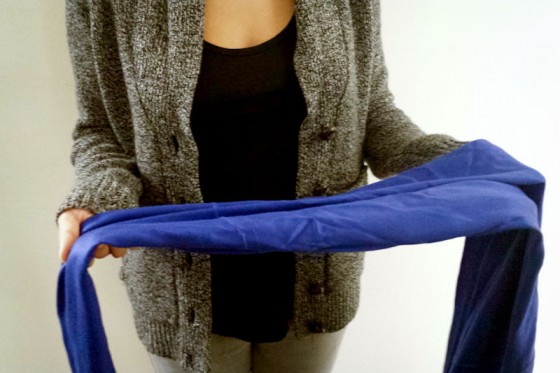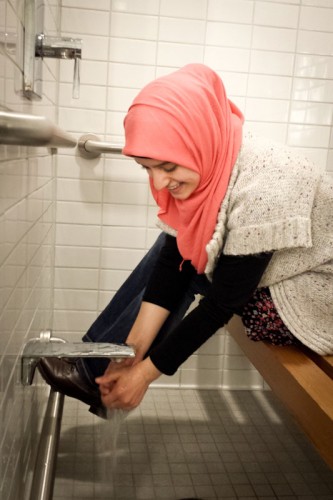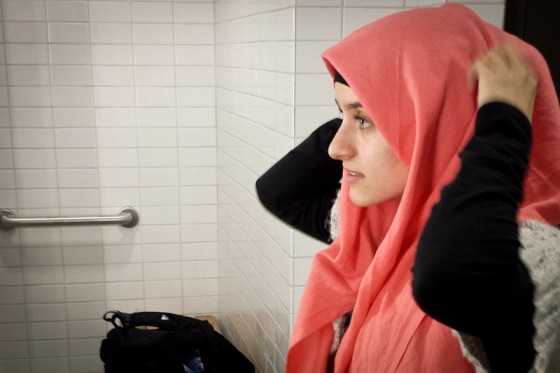Fearing judgment and discrimination, some Muslim women are giving up wearing headscarves in Seattle, while others are putting them on for the first time.
She could tell that people weren’t taking her seriously. She felt distanced and foreign. People just couldn’t see past her headscarf.
Lulu, who asked to be identified by a nickname for this story, moved from Saudi Arabia to Seattle three years ago to study chemistry at the University of Washington. It was her first time back in the U.S. since age four, when her family left Houston and returned to their native country.
Lulu describes the hijab — a general term for the variety of head, face and body coverings worn by Muslim women — as “an extension of modesty,” and “tradition.”
While living in Saudi Arabia, where it’s pretty much mandatory for women to be covered in public, she began wearing a headscarf on and off at 13, and then permanently by age 17.
But then she moved back to Seattle.
Wearing the hijab her first year in Washington, Lulu felt people were treating her differently. While walking through campus, people would approach her assuming she was not a citizen.
“People would come up to me and were like ‘You should apply for a green card. I can help you with that.’ It was really weird,” Lulu said.
Even the UW administration personnel had stereotyped her as non-American when they directed her to an international freshman orientation group. She was already registered for a general one.
 Lulu displays the fabric she once wore as a hijab. She still occasionally wears it as a scarf to stay warm or as an accessory. (Photo by Annie Wilson)
Lulu displays the fabric she once wore as a hijab. She still occasionally wears it as a scarf to stay warm or as an accessory. (Photo by Annie Wilson)
An experience dancing at a downtown Seattle studio was one of the last straws.
“That’s where most people actually made comments,” she said.
While dancing, the headscarf tended to partially fall off, which made people laugh and tell her that her “thing was falling off.”
Lulu finally decided to stop wearing her everyday headscarf in hopes of being treated more normally.
“Honestly, it was completely different,” she said when I asked her what it felt like once she removed her hijab. “People took me a lot more seriously. They spoke to me before assuming that I didn’t speak English, stuff like that.”
On her first day in Seattle without wearing the scarf, she says some friends and classmates didn’t even recognize the unveiled her.
“Some people would say ‘Oh my god, I see your hair! Is that okay?’” she laughed. “What do you say to that? ‘Yeah it’s cool; you may see my hair!’”
For UW senior Meva Beganovic, on the other hand, living in Seattle actually inspired her to start wearing hijab.
Beganovic was born in Bosnia, where she lived for 7 years before moving to Kennewick, Wash. She described her family as Muslim but generally not very religious.
“Growing up, honestly, I never considered wearing it,” Beganovic said. “No one in my family ever wore it, and it’s not very common in the Bosnian community.”

It wasn’t until Beganovic moved to Seattle that her perspective began to change.
In comparison to Kennewick, a city with just one mosque, King County has more than 25 mosques, and an estimated population of 30,000 Muslims, according to Arsalan Bukhari, Executive Director of the Counsel on American-Islamic Relations Washington Chapter.
The sheer number of women wearing hijab in Seattle surprised Beganovic.
“I was mind-blown,” she said. “It was almost as if I felt jealous of them. Everyone knew they are Muslim. I wanted people to know I’m Muslim too.”
In her UW Freshman English class, her teacher asked the students to write about a minority group within the community. Beganovic decided to write about hijab.
“The more and more I did the research, the more and more I found I really liked it,” Beganovic said with a huge smile.
Beganovic also became involved in the Muslim Student Association at UW, which she said also influenced her understanding and personal interpretation of hijab.
In Seattle, Beganovic still feels different from most people.
“I have something on my head that is different and it makes people take a second look. It’s not like I could walk down the street and not have anyone notice — people will notice!” she said with a smile.
Though Beganovic feels like she stands out, she said that most of the time she does not feel discriminated against, a blessing she believes is partly associated with white privilege.
“When someone sees a fair skinned person with blue eyes wearing the headscarf they get curious but they don’t automatically dislike it because it’s not SO different,” she said.
As for Lulu, she continues to avoid wearing a headscarf, except when she’s back in Saudi Arabia.
“It’s a lot easier for me to take it off [in Seattle] because people tend to treat me a lot more normally, unfortunately,” Lulu said.
Bukhari says he knows a handful of other Muslim women in Seattle who have chosen to stop wearing a headscarf because they feel the discrimination is just not worth it.
CAIR keeps a database of incidents of anti-Muslim discrimination reported in the state. They’ve logged about 150 such cases in Seattle alone so far this year. Several of the cases involve stereotypes and prejudice about women who wear headscarves, from incidents of harassment at the Canadian border to employment discrimination.
He says understands why Lulu would be shy about sharing her story of unveiling.
“People can be really judgmental,” he said, speculating that other Muslims might insist that she should have stuck with it, in spite of the feelings of discrimination, as a testament to her faith.
“I totally feel for her,” said Bukhari. “The way people are in society, they are judgmental and comment about others without being in their shoes.”
For more, check out this Seattle Times photo essay on the tradition of head covering across different cultures and religions in Seattle.



By way of wearing the hijab, there is certainly a sublime power to this form of modesty. In fact: all of nature herself provides an outer layering, from which a further beauty resides.
Hence, nature fears not her coverings.
Lulu is using the term hijab in a very Saudi way, despite being American. Hijab in most American Muslim circles refers only to the head covering, or sometimes the head-and-body covering.
Very very few Americans, however, use hijab to describe the face covering. That word is almost always niqab in America, except for a few immigrant groups who call it burqa or purdah.
The only modern people who refer to hijab as the head-body-face covering are Saudi scholars and a few scholars from the Tableeghi Jama’at.
hey teacher